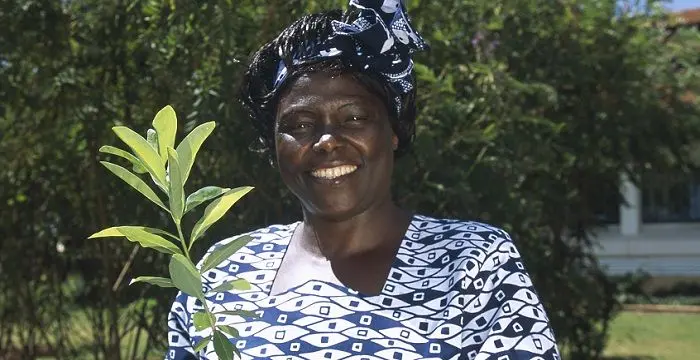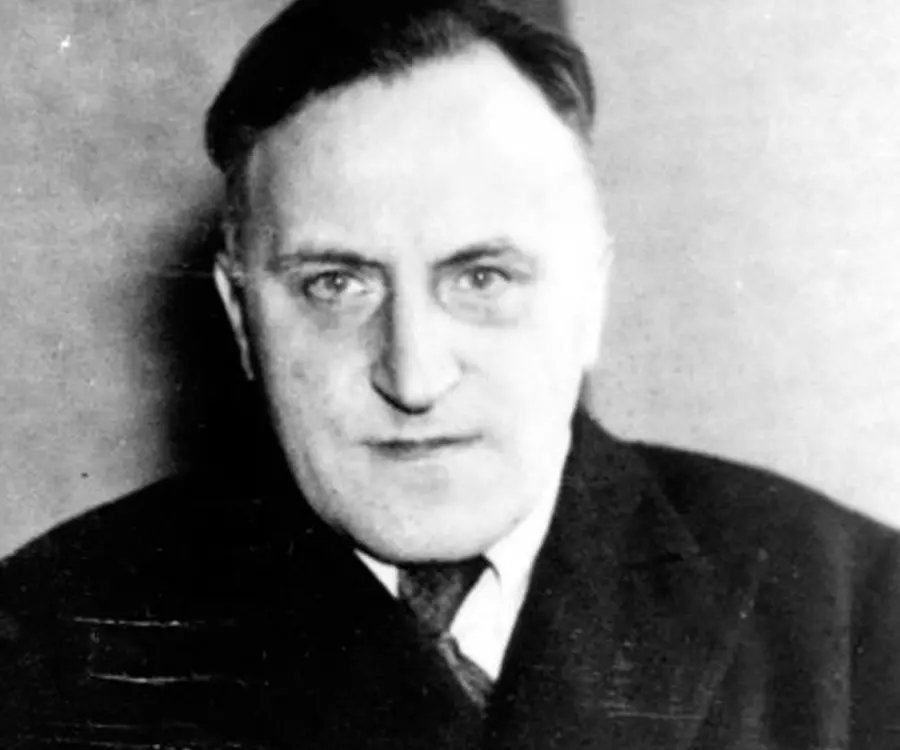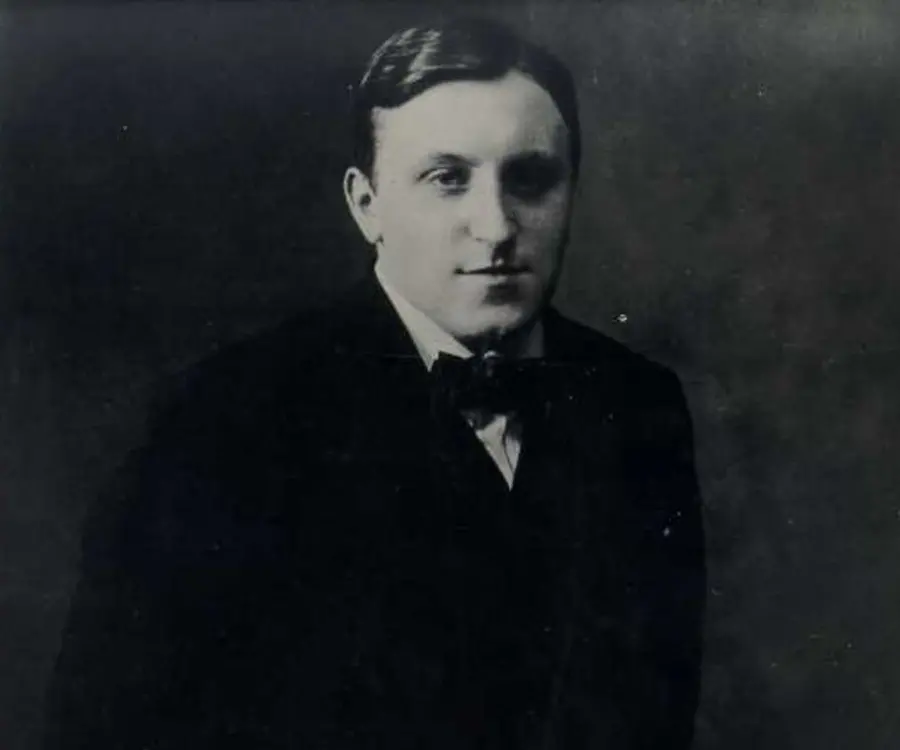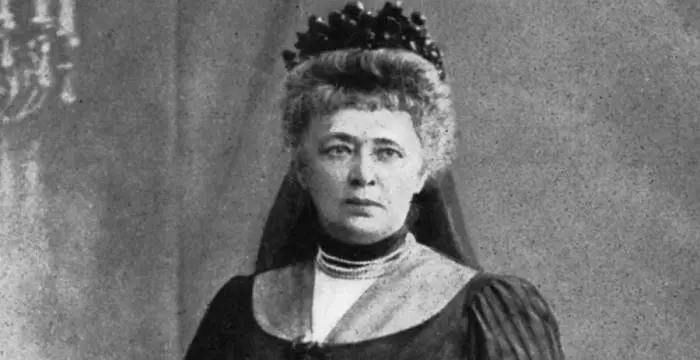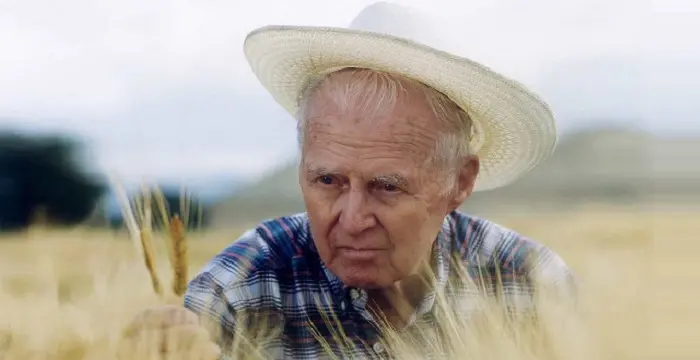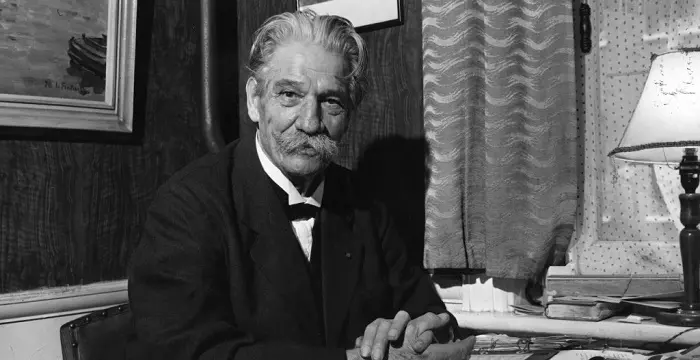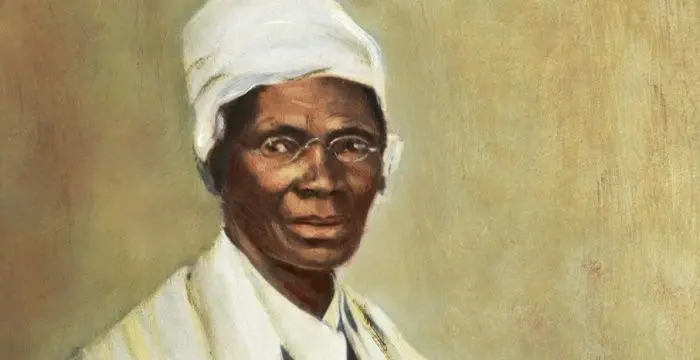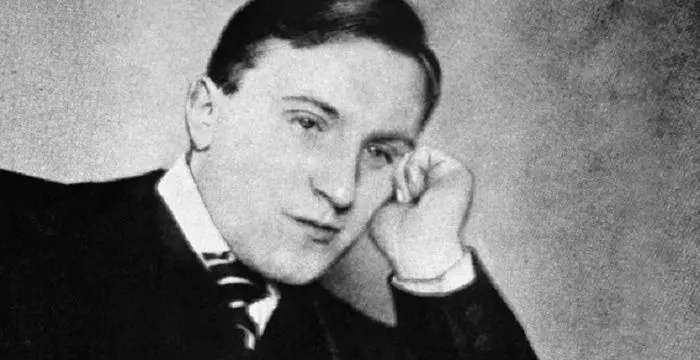
Carl von Ossietzky - Pacifist, Timeline and Life
Carl von Ossietzky's Personal Details
Carl von Ossietzky was a German pacifist and journalist, who was awarded the 1935 Nobel Peace Prize
| Information | Detail |
|---|---|
| Birthday | October 3, 1889 |
| Died on | May 4, 1938 |
| Nationality | German |
| Famous | Nobel Peace Prize, Activists, Peace Activists, Nobel Peace Prize Winner, Pacifist |
| Spouses | Maud Lichfield-Wood |
| Childrens | Rosalinde von Ossietzky-Palm |
| Cause of death |
|
| Birth Place | Hamburg |
| Gender | Male |
| Sun Sign | Libra |
| Born in | Hamburg |
| Famous as | German Pacifist & Nobel Peace Prize Winner |
| Died at Age | 48 |
// Famous Nobel Peace Prize Winner
Wangari Maathai
Wangari Maathai was an environmentalist who won the prestigious Nobel Peace Prize Award. Go through this biography to explore details about her life, childhood, and timeline.
Randal Cremer
Sir William Randal Cremer was an English pacifist who was awarded the Nobel Peace Prize in 1903. This biography profiles his childhood, life, career, works, achievements and timeline.
Alva Myrdal
Alva Myrdal was a Swedish politician, diplomat and sociologist, best remembered as the winner of 1982 Nobel Prize for Peace. This biography of Alva Myrdal provides detailed information about her childhood, life, achievements, works & timeline.
Carl von Ossietzky's photo
Who is Carl von Ossietzky?
Carl von Ossietzky was a German pacifist and journalist, who waged a long battle against the German establishment regarding their secret project to rearm the army. He was awarded the 1935 Nobel Peace Prize. Ossietzky’s father passed away when he was no more than two years old but his step father guided him as regards to his political beliefs and about the benefits of social democracy. He did not shine as a student and in fact quit school quite early in life but it did not stop him from becoming a journalist. Even though he was a pacifist, Carl von Ossietzky was compelled to serve in the First World War and he became further convinced about the vagaries of war. Upon his return, he embarked on his journalism career and also served as the secretary of the German Peace Society. Eventually, he became the editor in chief of the publication titled ‘The World Stage’ and it was with that publication that he waged a campaign against the violations of the ‘Treaty of Versailles’ that had been committed by the German military establishment. He had been imprisoned more than once for his stand. He was also a vocal critic of the Nazi party and its leadership, which is why he was sent to a concentration camp.
// Famous Pacifist
Randal Cremer
Sir William Randal Cremer was an English pacifist who was awarded the Nobel Peace Prize in 1903. This biography profiles his childhood, life, career, works, achievements and timeline.
Bertha von Suttner
Baroness Bertha Felicie Sophie von Suttner was a Czech-Austrian pacifist who became the first woman to receive the Nobel Peace Prize. This biography profiles her childhood, life, career, activities and timeline.
Childhood & Early Life
Carl von Ossietzky was born on 3 October, 1889 in Hamburg, Germany, to Carl Ignatius von Ossietzky and his wife Rosalie. His father used to work as a stenographer and was employed by a lawyer and later on by a senator.
His father passed away when he was still only two. His mother remarried when he was around 9 and his step-father, Gustav Walther, shaped his attitude to politics and life.
He did not fare as well in academics as he would have liked and when he was 17, he decided to discontinue his education at secondary school in order to work as an administrative civil servant. Subsequently, he started working as a journalist and the first publication to give him a platform was ‘Das FreieVolf’ (The Free People).
Career
He was opposed to militarism and in 1913 declared himself as a pacifist. In July of the same year, he wrote an article criticising a verdict passed by the court that was pro-military in nature and he had to face the court since the Prussian War Ministry deemed the article to be an insult. He got off after paying a fine.
He was drafted into the army in the Bavarian Pioneer Regiment in 1916 despite his reluctance. During his time at the army, Carl von Ossietzky was appalled at the destruction that was caused due to military action and it was something that further strengthened his pacifist views. Following the war, he went back to journalism and continued to write in favour of democracy.
Following his appointment as the secretary of the German Peace Society in Berlin, he established the monthly publication ‘Information Sheet’ in 1920. The ‘Monists’ Monthly’ was another publication for which he wrote regularly. However, Carl von Ossietzky wasn’t too keen on an office job and before long he took up the job of an editor of foreign affairs at the ‘Berlin People’s Paper.’
The ‘Berlin People’s Paper’ established a political party called ‘Republican Party’ but suffered a loss in the election in 1924 and Ossietzky’s brief dalliance with politics came to an end. Subsequently, he joined the political magazine ‘Tagebuch’ or ‘Journal’ and became a political commentator.
He joined the German publication ‘The World Stage’ in 1926 and shortly thereafter he was named the editor in chief of the publication. The publication was known for its vocal stand on the German military’s policy of secretly rearming itself and Ossietzky continued that tradition during his editorship. He was held guilty of libel and he was imprisoned for a month.
Undaunted by his earlier troubles with the German establishment, Carl von Ossietzky published an article written by Walter Kreiser in ‘The World Stage’ in 1929 detailing the German military’s violation of the ‘Treaty of Versailles’ when it started training a special air force unit secretly. The same year, he was charged for revealing military secrets and two years later he was sentenced for 18 months. He only served seven months of his sentence.
He was also opposed to the ideals of the Nazi party under Adolf Hitler and the aggressive anti-Semitism that it promoted. He wrote vigorously about the dangers pertaining to the Nazi party and in 1933, after Hitler became the Chancellor of Germany, Ossietzky was arrested on the aftermath of the Reichstag fire. He was sent to the Nazi concentration camp named KZ Esterwegen, where he was ill treated and was also denied food by the wardens.
Major Works
Carl von Ossietzky’s most significant work was the period in which he served as the editor of ‘The World Stage’. During his time as an editor, he went after the secret plans of the German military establishment in violating the provisions of the ‘Treaty of Versailles’.
Awards & Achievements
Carl von Ossietzky was awarded the Nobel Peace Prize in 1936 ‘for his struggle against German’s rearmament’. It was a controversial decision as the Nazi party saw it as a direct affront and asked Ossietzky to decline the prize but he did not.
Personal Life & Legacy
In 1914, he got married to an Englishwoman Maud Lichfield-Wood, who was a suffragette. The couple had a daughter, Rosalinde von Ossietzky-Palm.
Carl von Ossietzky died on 4 May, 1936 in Berlin-Pankow due to tuberculosis at the age of 48. He was released from prison and kept under surveillance by the Gestapo during his last days.
// Famous Nobel Peace Prize
Emily Greene Balch
Emily Greene Balch was an American economist, sociologist and pacifist who won the 1946 Nobel Peace Prize. This biography of Emily Greene Balch provides detailed information about her childhood, life, achievements, works & timeline.
Norman Borlaug
Norman Borlaug was an American biologist known as the “Father of the Green Revolution”. This biography of Norman Borlaug provides detailed information about his childhood, life, achievements, works & timeline.
Albert Schweitzer
Albert Schweitzer was a German born French theologian, organist, philosopher, physician, and medical missionary. Check out this biography to know about his childhood, family life, and achievements.
Carl von Ossietzky biography timelines
- // 3rd Oct 1889Carl von Ossietzky was born on 3 October, 1889 in Hamburg, Germany, to Carl Ignatius von Ossietzky and his wife Rosalie. His father used to work as a stenographer and was employed by a lawyer and later on by a senator.
- // 1913He was opposed to militarism and in 1913 declared himself as a pacifist. In July of the same year, he wrote an article criticising a verdict passed by the court that was pro-military in nature and he had to face the court since the Prussian War Ministry deemed the article to be an insult. He got off after paying a fine.
- // 1914In 1914, he got married to an Englishwoman Maud Lichfield-Wood, who was a suffragette. The couple had a daughter, Rosalinde von Ossietzky-Palm.
- // 1916He was drafted into the army in the Bavarian Pioneer Regiment in 1916 despite his reluctance. During his time at the army, Carl von Ossietzky was appalled at the destruction that was caused due to military action and it was something that further strengthened his pacifist views. Following the war, he went back to journalism and continued to write in favour of democracy.
- // 1920Following his appointment as the secretary of the German Peace Society in Berlin, he established the monthly publication ‘Information Sheet’ in 1920. The ‘Monists’ Monthly’ was another publication for which he wrote regularly. However, Carl von Ossietzky wasn’t too keen on an office job and before long he took up the job of an editor of foreign affairs at the ‘Berlin People’s Paper.’
- // 1924The ‘Berlin People’s Paper’ established a political party called ‘Republican Party’ but suffered a loss in the election in 1924 and Ossietzky’s brief dalliance with politics came to an end. Subsequently, he joined the political magazine ‘Tagebuch’ or ‘Journal’ and became a political commentator.
- // 1926He joined the German publication ‘The World Stage’ in 1926 and shortly thereafter he was named the editor in chief of the publication. The publication was known for its vocal stand on the German military’s policy of secretly rearming itself and Ossietzky continued that tradition during his editorship. He was held guilty of libel and he was imprisoned for a month.
- // 1929Undaunted by his earlier troubles with the German establishment, Carl von Ossietzky published an article written by Walter Kreiser in ‘The World Stage’ in 1929 detailing the German military’s violation of the ‘Treaty of Versailles’ when it started training a special air force unit secretly. The same year, he was charged for revealing military secrets and two years later he was sentenced for 18 months. He only served seven months of his sentence.
- // 1933He was also opposed to the ideals of the Nazi party under Adolf Hitler and the aggressive anti-Semitism that it promoted. He wrote vigorously about the dangers pertaining to the Nazi party and in 1933, after Hitler became the Chancellor of Germany, Ossietzky was arrested on the aftermath of the Reichstag fire. He was sent to the Nazi concentration camp named KZ Esterwegen, where he was ill treated and was also denied food by the wardens.
- // 1936Carl von Ossietzky was awarded the Nobel Peace Prize in 1936 ‘for his struggle against German’s rearmament’. It was a controversial decision as the Nazi party saw it as a direct affront and asked Ossietzky to decline the prize but he did not.
- // 4th May 1936Carl von Ossietzky died on 4 May, 1936 in Berlin-Pankow due to tuberculosis at the age of 48. He was released from prison and kept under surveillance by the Gestapo during his last days.
// Famous Activists
Temple Grandin
Temple Grandin is a well-known American writer, autistic activist and animal expert. This biography profiles her childhood, life, achievements, career and timeline
Susan Sontag
Susan Sontag is an American critical essayist, cultural analyst, novelist, political activist, filmmaker and playwright of international repute. Read on to find out more about her childhood, career, profile and timeline.
Serj Tankian
Serj Tankian is a famous American singer-songwriter and member of the band, ‘System of a Down’. This biography profiles his childhood, music career, life, achievements and timeline.
Gaia Wise
Gaia Wise is an actress, environment activist and the daughter of Emma Thompson. Check out this biography to know about her childhood, family, personal life, including her age, birthday, etc.
Sojourner Truth
Sojourner truth was an African American abolitionist who was the first black woman to win a case against a white man. This biography provides detailed information about her childhood, life, achievements, works & timeline.
Garry Kasparov
Garry Kasparov is a Russian chess Grandmaster considered by many to be the greatest chess player of all time. This biography of Garry Kasparov provides detailed information about his childhood, life, achievements, works & timeline.
Carl von Ossietzky's FAQ
What is Carl von Ossietzky birthday?
Carl von Ossietzky was born at 1889-10-03
When was Carl von Ossietzky died?
Carl von Ossietzky was died at 1938-05-04
Where was Carl von Ossietzky died?
Carl von Ossietzky was died in Berlin
Which age was Carl von Ossietzky died?
Carl von Ossietzky was died at age 48
Where is Carl von Ossietzky's birth place?
Carl von Ossietzky was born in Hamburg
What is Carl von Ossietzky nationalities?
Carl von Ossietzky's nationalities is German
Who is Carl von Ossietzky spouses?
Carl von Ossietzky's spouses is Maud Lichfield-Wood
Who is Carl von Ossietzky childrens?
Carl von Ossietzky's childrens is Rosalinde von Ossietzky-Palm
What is Carl von Ossietzky's cause of dead?
Carl von Ossietzky dead because of Tuberculosis
What is Carl von Ossietzky's sun sign?
Carl von Ossietzky is Libra
How famous is Carl von Ossietzky?
Carl von Ossietzky is famouse as German Pacifist & Nobel Peace Prize Winner
